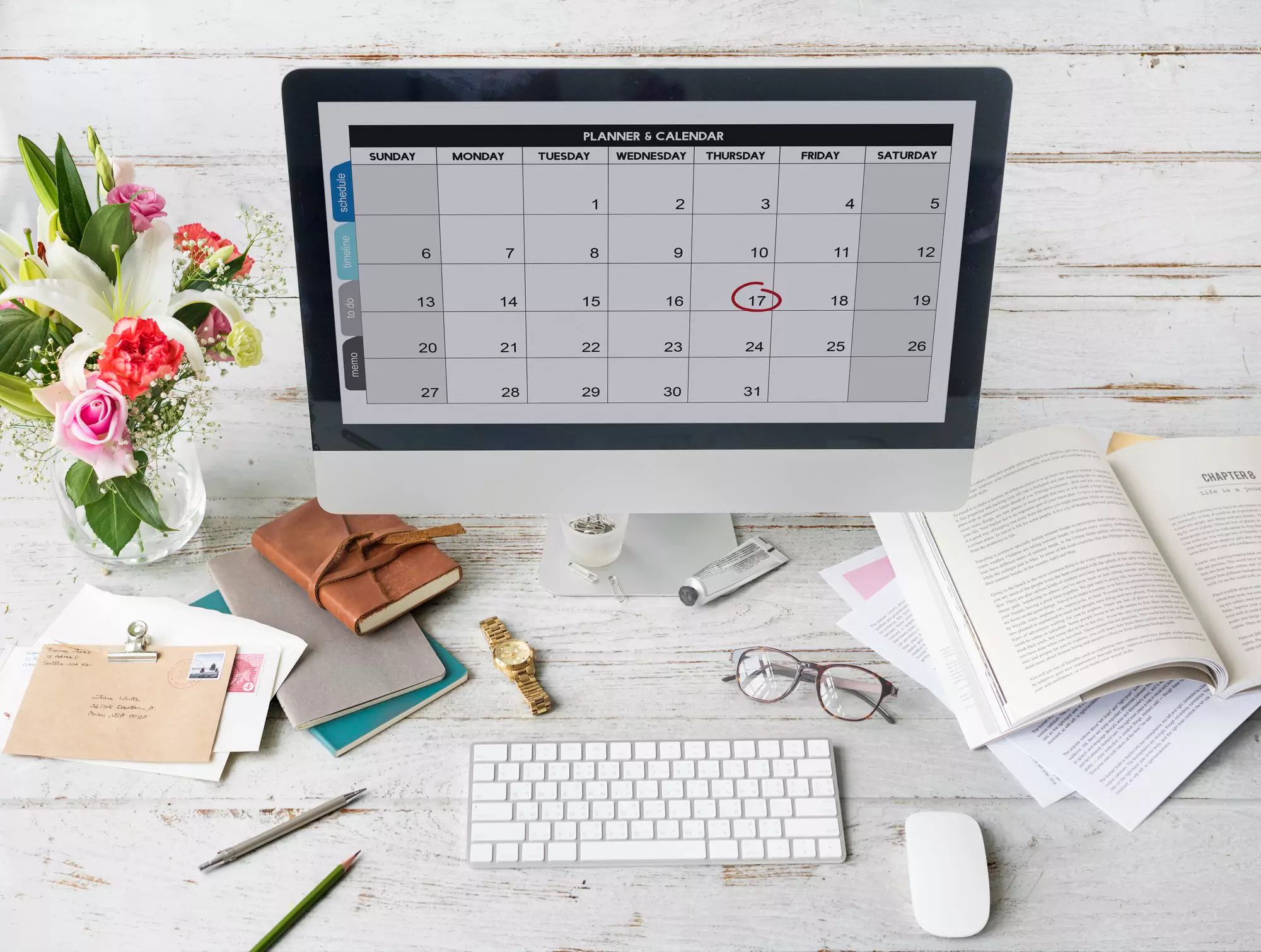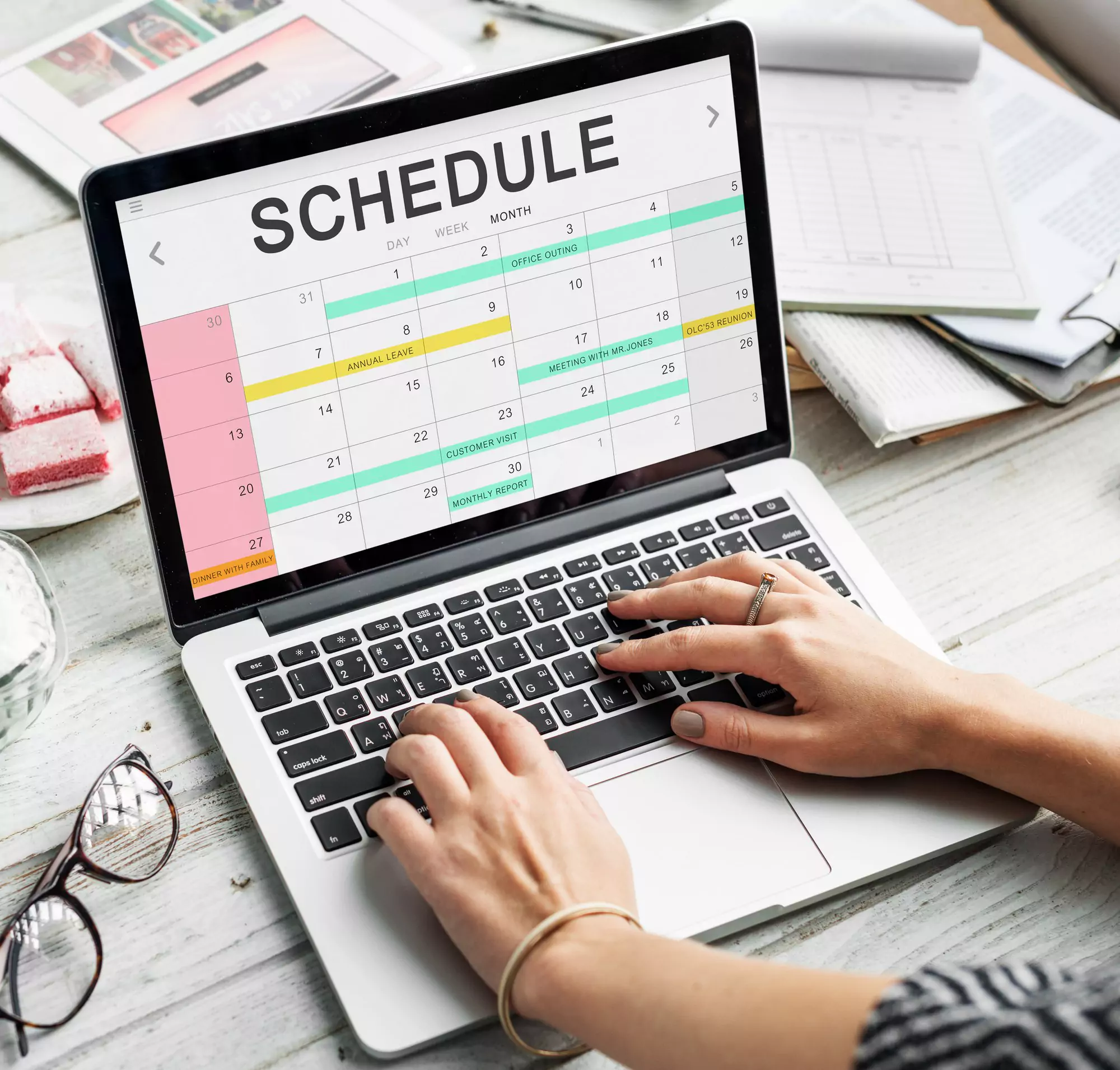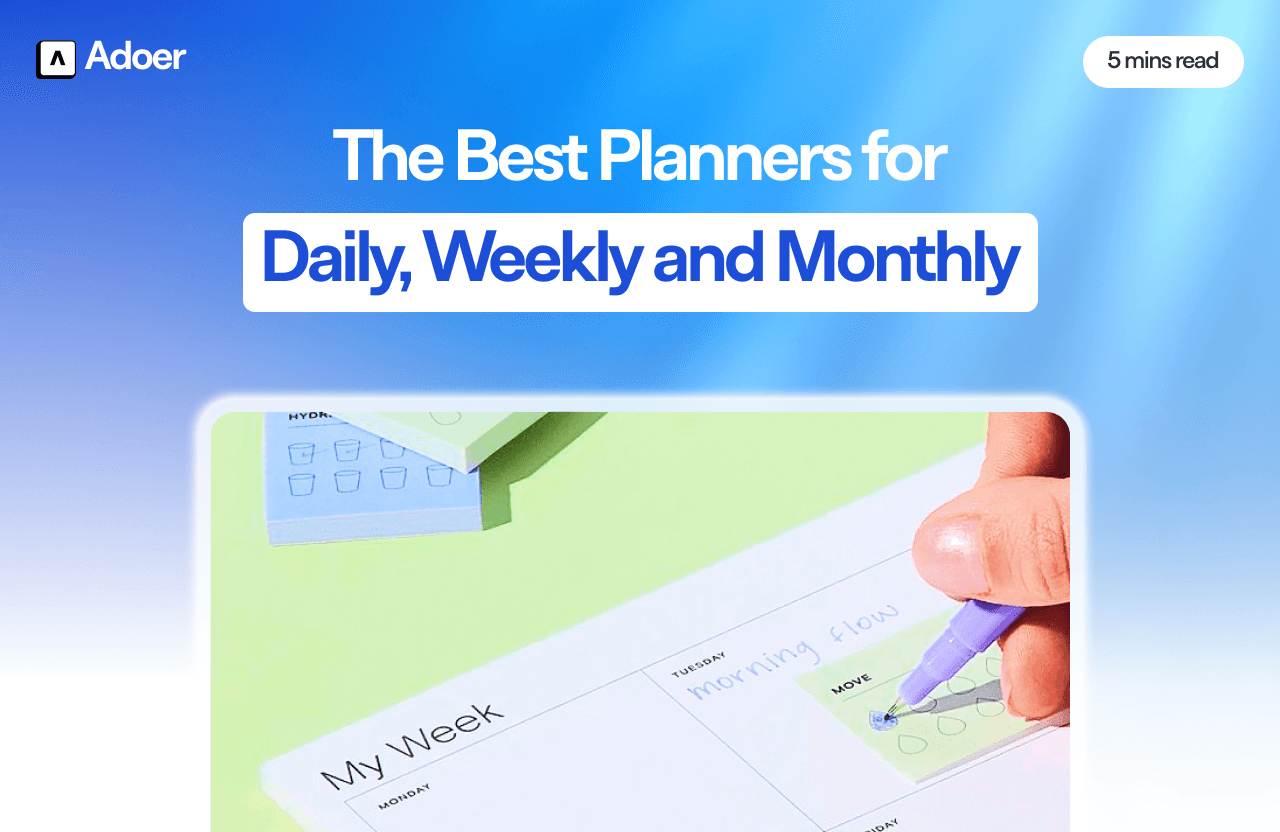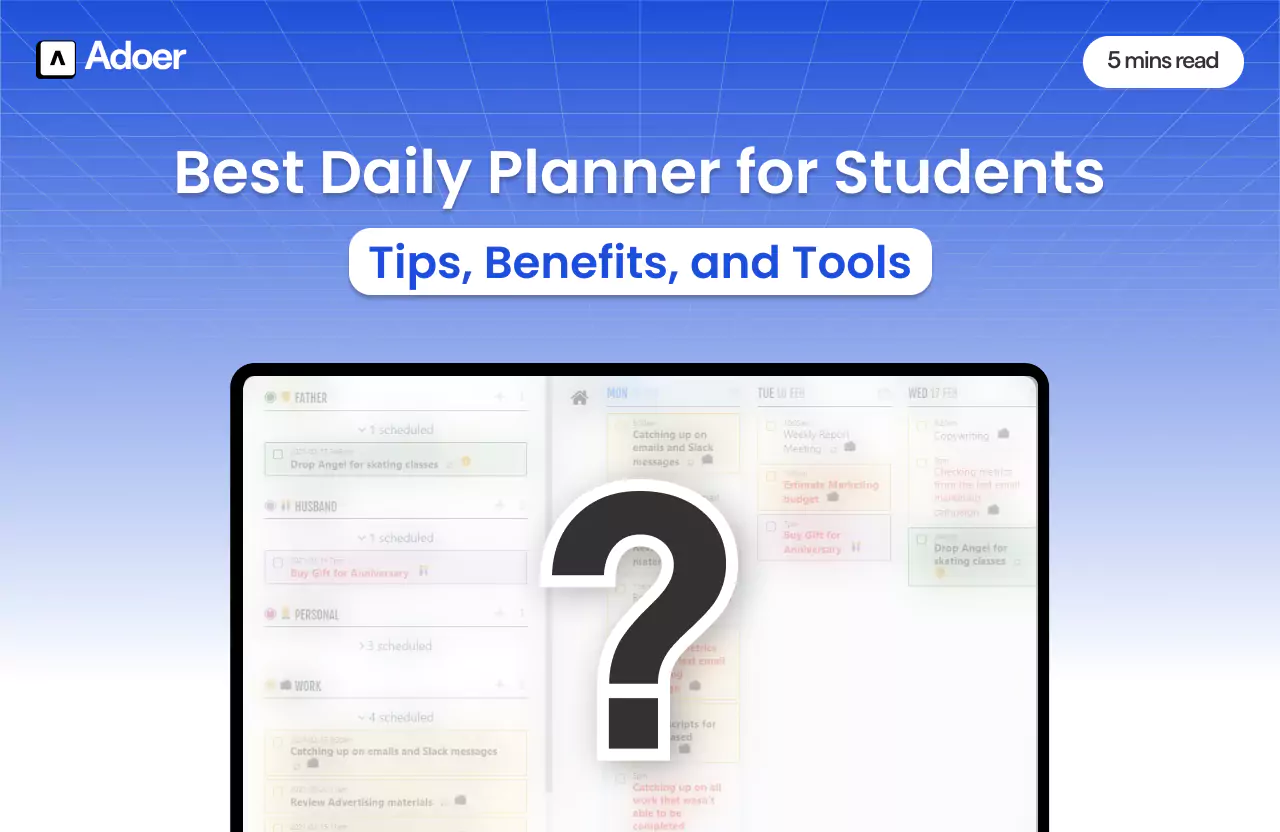Best Daily Weekly & Monthly Planners

Author
Shivang Khungar
A planner isn’t just a software, it’s your personal roadmap to staying on top of everything. Whether you need a digital daily weekly monthly planner or physical planner, having the right one keeps your life organized, balanced, and productive.
And why not?
Studies show that writing down tasks increases the likelihood of completing them by 42%.
As a result, Cognitive Market Research's latest report predicts that the global planners market will grow to $6,259.01 million by 2029.
These planners make life easy. Moreover, there’s a planner for everyone. For instance:
Daily planners help you focus on immediate tasks,
Weekly planners keep your week streamlined, and
Monthly planners map out long-term goals.
However, each type has unique benefits to match your lifestyle and needs. So, choosing the right one becomes crucial. But don’t worry, in this guide, we will explore some daily weekly monthly planner.
Furthermore, we will understand their benefits, and ultimately, find out which one is right for you. So, let’s dive into it.
Best Daily Planners for Ultimate Productivity
Before jumping straight into the best daily weekly monthly planner, we need to understand the best ones in each category.
Daily planners are the secret weapon for maximizing your day-to-day productivity.
So, let’s dive into what makes a daily planner so effective and the key features to look for when choosing one.
Features to Look for in a Daily Planner:
Time-blocking sections: Allows you to break your day into manageable chunks and stay focused on tasks.
Task prioritization: Helps you identify high-priority tasks so you can tackle what matters most.
Space for notes: Extra room for ideas, thoughts, or quick reminders.
Daily habit trackers: Keep track of goals like exercise, water intake, or meditation.
Portable design: Compact and lightweight so it’s easy to carry with you everywhere.
Durability: Sturdy cover and quality paper to handle daily use without wear and tear.
Top Daily Planners for 2025
The right daily weekly monthly planner can transform how you manage your day, and with so many choices for 2025, it’s easier than ever to find one that suits your style and goals. Below are four of the best daily planners for 2025.
1. Adoer Daily Planner
Adoer is more than just a daily weekly monthly planner, it's the best life planner designed to streamline your day. With features like time blocking and recurring tasks, it ensures you stay focused on what matters.
Moreover, the intuitive layout allows you to set daily priorities and track goals effortlessly. Whether you're balancing work and personal life or managing multiple projects, Adoer adapts to your needs and helps you stay organized without stress.
Pros:
Time-blocking feature to manage your day efficiently
Recurring tasks to automate daily planning
Cons:
Digital-only, no print option currently available
2. Moleskine Journey Digital Planner
Taking its iconic physical design into the digital space, the Moleskine Journey Digital Planner combines elegance with practicality. Available on tablets and Android, this planner gives you the feel of writing while offering features like cloud syncing and custom templates.
Furthermore, it’s perfect for those who love a traditional look but need digital flexibility.
Pros:
Beautiful, user-friendly digital interface
Syncs across devices for easy access
Cons:
Limited features compared to other digital planners
Costly compared to simpler options
3. Passion Planner Digital
The Passion Planner Digital keeps you connected and productive with a blend of goal-setting tools and daily task tracking. Available across platforms, it’s ideal for users who want to track both personal growth and daily productivity.
Additionally, sections for reflection and motivational quotes, help users stay positive and focused throughout the day.
Pros:
Digital format with cloud storage for syncing
Offers guided reflection for personal and professional growth
Cons:
Can feel a bit structured for users wanting more flexibility
Reflection prompts may not appeal to everyone
4. Todoist
While primarily known as a task management app, Todoist functions excellently as a daily digital planner. Its clean design, recurring task options, and integrations with platforms like Google Calendar make it a popular choice.
Moreover, whether you're organizing work tasks or personal to-dos, Todoist’s flexible structure allows you to plan your day efficiently.
Pros:
Integrates with various apps and platforms
Flexible, simple interface for daily task management
Cons:
Less focus on long-term goal-setting
Requires an internet connection for full functionality
How to Use a Daily Planner Effectively
To get the most out of your daily planner, start by prioritizing tasks. Break your day into manageable time blocks, assigning specific tasks to each.
Moreover, include deadlines and checklists to stay on track. Review your planner each morning to set clear intentions, and wrap up your day by reflecting on completed tasks.
So, by consistently updating and checking your planner, you’ll stay organized, boost productivity, and reduce stress.

Best Weekly Planners for Organized Weeks
Finding the right weekly planner can significantly enhance your ability to stay organized and achieve your goals. Below, we explore the benefits of using a weekly planner and highlight some of the best digital planners for 2025.
Benefits of Using a Weekly Planner
Better time management: Weekly planners allow you to allocate specific time blocks for tasks, ensuring nothing slips through the cracks.
Clearer goal setting: They help you set and track both short-term and long-term goals, giving your week a purpose.
Stress reduction: By having an organized overview of your week, you reduce the last-minute rush and unexpected surprises.
Increased productivity: Weekly planners enable you to prioritize tasks, leading to a more focused and productive week.
Improved work-life balance: Plan your work tasks alongside personal commitments, ensuring you make time for both.
Top Weekly Planners for 2025 (Digital)
Here are the best digital weekly planners for 2025, starting with Adoer, which combines innovation and simplicity to help you get the most out of your week.
1. Adoer Weekly Planner
Adoer’s weekly planner is designed to help you manage not only your tasks but also your goals and priorities. With features like time-blocking, and goal tracking, Adoer adapts to both personal and professional planning.
Moreover, its easy integration with Google Calendar ensures your weekly plan stays in sync with your other schedules, so you never miss an important event. Lastly, thanks to its minimalistic design, Adoer is one of the best simple planners out there.
Pros:
Integrates with Google Calendar for seamless syncing
Motivational quotes to keep you motivated
Cons:
Some advanced features might take time to master
2. Trello Weekly Planner
Trello is a project management tool that can be adapted into a weekly planner. With its board and card system, you can map out your entire week visually. Thus, making it easy to drag and drop tasks as priorities change.
Additionally, it also offers automation features like setting due dates and reminders, helping you stay on top of your weekly goals.
Pros:
Visual interface is great for organizing tasks at a glance
Flexible design for both simple and complex weekly planning
Cons:
May feel overwhelming for users new to digital planning tools
Lacks the built-in goal-tracking feature of other planners
3. ClickUp Digital Planner
ClickUp is another comprehensive project management tool that can be customized for weekly planning. It offers a calendar view that lets you organize your tasks by day, time, and priority.
Furthermore, with its flexible design, ClickUp allows for detailed task management, complete with subtasks, reminders, and recurring schedules. Moreover, the goals feature enables you to break down weekly objectives and track them across multiple projects.
Pros:
Highly customizable for various workflows
Features like recurring tasks and reminders keep you on track
Cons:
Interface can feel overwhelming for new users
Requires some setup to tailor it as a weekly planner
4. Monday.com Digital Planner
Monday.com is another excellent choice for digital weekly planning. Known for its visual and intuitive interface, Monday.com offers users the ability to drag and drop tasks into a weekly schedule.
The platform’s automated workflows simplify the planning process, while its goal-setting features allow you to track progress throughout the week. It’s highly collaborative. Thus, making it perfect for team or personal planning.
Pros:
Visually engaging and easy-to-use interface
Automation tools streamline repetitive tasks
Cons:
Premium features can be costly
Limited goal-tracking in the free version
Tips for Setting Up Your Weekly Planner:
Define your top priorities: Firstly, start by listing the most important tasks or goals for the week, so you can focus on what matters most.
Time block your schedule: Moreover, use time-blocking to allocate specific times for work, personal tasks, and breaks.
Add recurring tasks: Automate weekly chores or routines to free up mental space for more critical tasks.
Leave room for flexibility: Additionally, keep some open slots for last-minute changes or unexpected tasks.
Review your week in advance: At the start of each week, review your upcoming commitments to ensure nothing is missed.
By using a well-structured daily weekly monthly planner, especially a digital one like Adoer, you can take control of your week, stay organized, and achieve your goals efficiently.

Best Monthly Planners for Long-Term Planning
A monthly planner is more than just a tool for organizing appointments; it’s a strategic companion for tracking long-term goals. Whether it’s personal ambitions or professional objectives, the right monthly planner can help you steer your efforts in the right direction.
Why a Monthly Planner is Essential for Long-Term Goals
Big-picture focus: Monthly planners help you maintain perspective on your overarching goals by tracking long-term projects and personal aspirations.
Progress monitoring: They offer a space to review achievements and setbacks, allowing you to make adjustments to stay on track.
Strategic goal setting: By organizing tasks in a monthly layout, you can break down larger goals into manageable steps over several weeks.
Balanced planning: With a monthly view, you can identify patterns in workload, ensuring you don’t overload any particular week and stay balanced.
Flexible adjustments: A broader timeline allows you to account for changes and shifts in priorities, reducing the stress of daily replanning.
Top Monthly Planners for 2025 (Digital)
Here are the best monthly planners 2025. Each offers unique features to help you stay organized, track goals, and manage time efficiently.
1. Adoer Monthly Planner
Adoer continues to impress with its seamless adaptability for long-term planning. The monthly view integrates with Google Calendar, giving users the ability to block out significant milestones and deadlines while tracking progress with recurring tasks and goal-setting sections.
Additionally, adoer also excels in offering motivational prompts and reflections to help users stay focused on the bigger picture. It’s an excellent tool for anyone who juggles long-term projects and short-term tasks simultaneously.
Pros:
Comprehensive monthly view with built-in goal-tracking
Keeps you motivated with reflective prompts for personal growth
Cons:
No physical version for those who prefer traditional planners
2. Notion Digital Planner
Notion is known for its highly customizable layout. Thus, making it a favorite for long-term planners. Its monthly planner template allows users to create an organized timeline of events, track project deadlines, and review personal goals.
Furthermore, the drag-and-drop functionality and multi-view options (list, calendar, or board) make it flexible for managing both personal and professional long-term plans.
You can also embed documents, images, or links, creating a dynamic and personalized planning experience.
Pros:
Flexible customization for various planning styles
Multi-view layouts help visualize goals and timelines
Cons:
Over-customization can become time-consuming
Lacks the simplicity that some users prefer in a planner
3. Toggl Plan
Toggl Plan is a visually appealing, timeline-based planner that excels in simplifying long-term planning for individuals and teams. Its monthly view helps you break down large projects into smaller steps, assign tasks, and track progress across months.
The color-coded timelines and drag-and-drop interface make it easy to adjust tasks and ensure that everything stays on track. This planner is perfect for those who like to plan visually and need an organized way to manage long-term projects.
Pros:
Intuitive visual interface for long-term planning
Easily adjust plans with a drag-and-drop feature
Cons:
Limited integration options compared to more comprehensive planners
Can be overwhelming for users preferring simplicity
4. Any.do Digital Planner
Any.do is designed for users who need a straightforward yet powerful tool for long-term planning. Its monthly planner feature allows you to break down your goals into manageable tasks, while its clean interface ensures that the process doesn’t feel overwhelming.
Furthermore, any.do integrates seamlessly with calendars and reminders. Thus, making it a great option for busy professionals looking to organize both their personal and professional lives with ease.
Pros:
Simple, easy-to-use interface that minimizes clutter
Integration with calendar and task management tools
Cons:
Lacks the depth of customization offered by other digital planners
Limited goal-tracking features for advanced users
How to Plan Your Month Using a Monthly Planner
Set clear monthly goals: Start by identifying the key goals or milestones you want to achieve. Break them down into smaller tasks that you can distribute across the month.
Prioritize important dates: Mark significant deadlines, appointments, or events that will shape your month. This gives you a foundation to build your tasks around.
Allocate tasks weekly: Distribute your tasks throughout the month in manageable chunks, ensuring you don’t overload yourself in any one week.
Use time-blocking: Assign specific days or hours for crucial tasks to avoid conflicts and improve productivity.
Review and adjust: Regularly check your progress and adjust your plan as needed. Flexibility is key to staying on track with long-term goals.
With the right monthly planner, you can map out your long-term goals and track them with ease. Whether you choose Adoer or one of the other top digital planners, having a strategic monthly plan can set the stage for success throughout the year.

Digital vs. Physical Planners: Which One Suits You?
When it comes to staying organized, choosing the right daily weekly monthly planner is key to staying on top of your tasks, goals, and schedules. With so many options available, deciding between digital planners and physical planners can be challenging.
In this section, we’ll look at the pros and cons of each and how a hybrid approach might be the best solution for your organizational needs.
Pros and Cons of Digital Planners
Opting for a digital daily weekly monthly planner offers a variety of advantages, especially for those who value convenience and flexibility.
Pros:
Accessibility: Firstly, a digital planner can be accessed from any device, meaning you can stay organized whether you’re at your desk, on the go, or anywhere in between.
Integration: Many digital planners, like Adoer, sync with other tools such as Google Calendar, helping you automatically manage recurring tasks and long-term goals with ease.
Cons:
Screen fatigue: Constantly using screens to update your daily weekly monthly planner can contribute to digital overload.
Tech reliance: Moreover, a digital planner depends on battery life and internet connectivity, which might occasionally limit access.
Pros and Cons of Physical Planners
For those who prefer a more traditional method, a physical daily weekly monthly planner offers a tactile experience that many find rewarding.
Pros:
Handwritten engagement: Writing by hand in a physical planner can help reinforce memory and add a sense of satisfaction when checking off completed tasks.
Distraction-free: Additionally, without the temptation of pop-ups or notifications, using a physical planner allows for more focused planning.
Cons:
Limited flexibility: Once you jot down tasks or goals in a physical daily weekly monthly planner, making changes can be cumbersome.
Portability issues: Moreover, carrying a bulky planner around isn’t always convenient, especially compared to the seamless accessibility of digital planners.
Hybrid Planning: Combining Digital and Physical Planners
If you’re torn between the convenience of a digital daily weekly monthly planner and the hands-on experience of a physical planner, a hybrid approach could be the perfect solution.
Use a digital planner for daily tasks and appointments: A digital daily weekly monthly planner, such as Adoer, allows you to handle dynamic schedules, sync appointments, and adjust plans on the fly.
Use a physical planner for long-term goals: Secondly, physical planners are excellent for reflecting on monthly progress and jotting down personal milestones.
Combine the two: For the best of both worlds, use a hybrid system where your daily weekly monthly planner spans both digital and physical realms.
Conclusion: Daily weekly Monthly Planner
Choosing the right daily weekly monthly planner is essential for staying organized, boosting productivity, and achieving both short-term and long-term goals.
Whether you prefer the flexibility of digital planners, the tactile experience of physical planners, or a hybrid approach, each option has its own strengths.
The key is to find a planner that suits your lifestyle and helps you streamline your day-to-day activities, while also setting and tracking your weekly and monthly goals.
FAQs
Can I switch between a digital and physical daily weekly monthly planner?
Yes, many people use a combination of both to enjoy the flexibility of a digital planner and the personal feel of a physical planner.
How do I choose the right daily weekly monthly planner for personal and work tasks?
Look for a planner, like Adoer, that offers sections for both personal and professional goals. Thus, allowing you to manage everything in one place.
What is the best way to set long-term goals in a daily weekly monthly planner?
A monthly planner is ideal for long-term planning, allowing you to break down bigger goals into manageable daily and weekly tasks.
Are digital planners better for time blocking and recurring tasks?
Yes, digital daily weekly monthly planners like Adoer are particularly useful for recurring tasks and time-blocking. Thus, offering features that automate scheduling.
Do digital daily weekly monthly planners offer motivational features?
Many digital planners, including Adoer, offer built-in motivational prompts and goal-setting features to help keep you focused and inspired.




